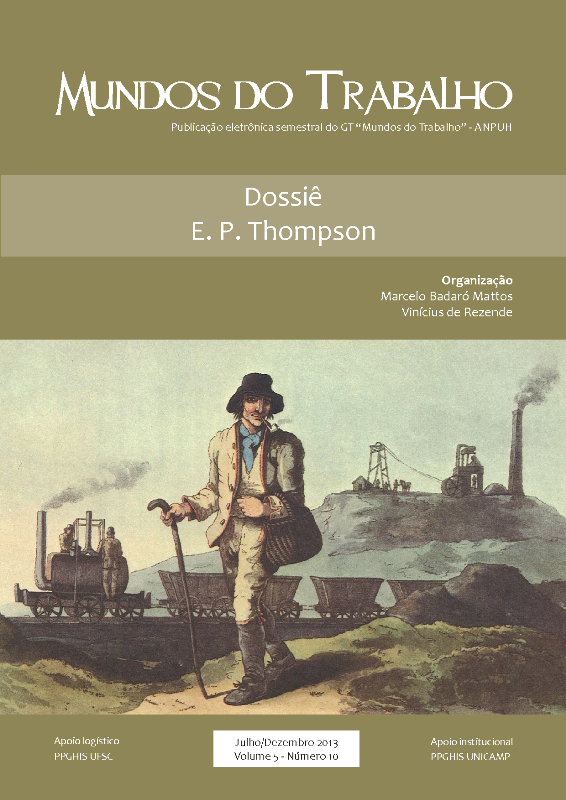Why weavers and metalworkers go to court: industry position and complaints to the labor court between the 1940s and 1960s
DOI:
https://doi.org/10.5007/1984-9222.2013v5n10p183Keywords:
Labour market, Textile workers, Factory workers, Labour CourtAbstract
The article analyzes the use of the Labour Court for textile workers and factory workers, between 1940 and 1960, based on lawsuits filed by workers of the two categories to the Board of Conciliation and Judgement (Labour Court) of Juiz de Fora. During this period, the transition to heavy industry has an impact on the configuration of the occupational structure of Brazilian society, on the labour market of Juiz de Fora, as well as on the composition of occupational categories analyzed, which presumably affected the actors’ behavior , resulting in the formu-lation of demands, therefore how the workers stablish their relationship with the labour court;
Downloads
Published
How to Cite
Issue
Section
License
The authors assign to Revista Mundos do Trabalho the exclusive rights of first publication, with the work simultaneously licensed under the Creative Commons Attribution License (CC BY) 4.0 International. This license allows third parties to remix, adapt and create from the published work, giving due credit for authorship and initial publication in this journal. Authors are authorized to take additional contracts separately, for the non-exclusive distribution of the version of the work published in this journal (e.g. publish in an institutional repository, personal website, publish a translation, or as a book chapter), with authorship and publication in this journal.









